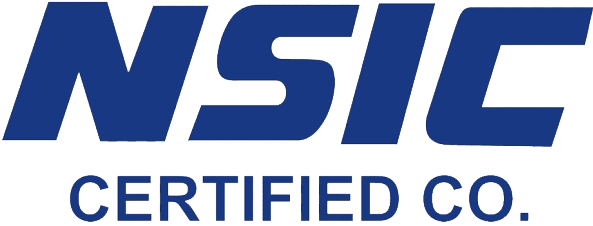Hold on. Before you click a bonus code, you should be able to add up the numbers.
Here’s the practical bit up front: don’t treat the advertised bonus value (e.g., “A$1,000!”) as cash you can pocket. Instead, compute the required turnover and compare it to the bonus-inflated expected value (EV) of the wagerable balance. In short: calculate (Deposit + Bonus) × Wagering Requirement = Required Turnover. If that number looks impossible with your usual bet size and session length, walk away. To be honest, most sign-up offers look flashier than they are once you break them down into real playtime and realistic bet sizes.

OBSERVE: What casinos actually give — and what they ask for
Wow! Casinos often advertise a single headline figure: match percentage, free spins, or cashback. Short sentence. But the headline hides several arithmetic traps: wagering requirements (WR), game contribution weightings (slots 100%, live 10% etc.), max bet caps while a bonus is active, expiry windows and maximum cashout caps. On the one hand, a 150% first-deposit match sounds irresistible. On the other hand, a 45× WR on D+B can turn a small deposit into an unplayable treadmill.
Let me expand: a sensible approach is to translate bonus terms into three simple numbers you can compare: required turnover, effective playable balance, and theoretical EV. Those three figures answer “How long will I be playing?” and “What is my expected loss or gain?” — which is the only honest way to think of a bonus.
Key formulas and a worked example
Hold on — here are the math rules you’ll use every time:
- Required Turnover = (Deposit + Bonus) × Wagering Requirement
- Max Bet While Bonus Active = min(casino limit, stated max bet). Breaching this forfeits winnings.
- Adjusted EV = (Playable Balance × Average Game RTP) − (House Edge × Required Turnover / Number of Bets) — simplified for planning.
Example 1 — Clear numbers: You deposit A$50, get a 100% match (Bonus A$50). WR = 35× on (D+B). Required Turnover = (50 + 50) × 35 = A$3,500. If you play A$1 spins on a 96% RTP slot, expected loss over that turnover is (1 – 0.96) × 3,500 = A$140. So, even though you ‘received’ A$50 free, the mathematically expected deficit to clear the WR is around A$90 when accounting for your deposit. Think about that. Small bets mean lots of time. Big bets break WR rules.
Example 2 — No-deposit free spins: 50 free spins on a low-volatility pokie, average spin cost for valuation = A$0.25. The casino caps withdrawal at A$50 and applies 45× WR on winnings. If average spin produces A$0.15 net, then total gross ≈ A$7.50; after WR and cap, your legally withdrawable expected amount drops to near zero. Short sentence. These offers are best thought of as demos with tiny upside.
Comparison table: common bonus types (quick arithmetic)
| Bonus Type | Typical WR | Best Use | EV notes |
|---|---|---|---|
| Deposit Match | 20×–50× | Experienced players with clear stake plans | Often negative EV due to WR; value depends on RTP of chosen games and bet sizing |
| No-Deposit Spins | 30×–60× | Try games; learn UI | Low EV; cashout caps reduce practical value |
| Free Spins (deposit-linked) | 25×–45× | Use on high RTP/low volatility slots | Better if spins convert to withdrawable balance quickly |
| Cashback | Often none (soft) / 1× (if bonus) | Reduces variance; best for live casino players | Usually best real-world value due to low or no WR |
| Reload / Loyalty | 10×–35× | Regular players who can meet modest WR | Good for longer-term bankroll strategies |
ECHO: Choose the right tool — not the biggest number
Alright, check this out—if you chase raw bonus size, you lose focus. The right criteria are:
- Effective WR (on D+B vs on Bonus only)
- Game contribution percentages
- Max bet constraints and expiry
- Withdrawal caps and KYC delays
To give you a practical navigation tool, I use three short heuristics when assessing any sign-up or reload offer:
- Turnover feasibility: Can I realistically meet the turnover given my usual bet size and available time?
- RTP matchup: Are the allowed games mostly high-RTP slots or low-contribution table games?
- Exit friction: Is the max cashout small, and is KYC likely to be invoked before payout?
Where to manage bonuses on the go
For busy players, managing multiple promotions and tracking wagering progress is easier on phones. If you prefer checking terms and tracking bonus play on your device, consider using reputable casino mobile apps or an aggregator that shows active wagers and remaining turnover—this reduces accidental mistakes like breaching max bet rules. The cleanest way I’ve found to keep tabs on active WR and expiry windows is to use authorised casino mobile apps integrated with your account dashboard; they surface the remaining playthrough in numeric form so you don’t guess.
Quick Checklist: Before you accept any casino bonus
- Read the wagering requirement and convert it into Required Turnover (D+B) × WR.
- Check game weightings — slots vs live tables matter a lot.
- Confirm max bet while bonus is active (e.g., A$5) and never exceed it.
- Note expiry and free spin batch timings to avoid losing portions.
- Verify withdrawal caps and VIP limits that may apply.
- Prepare ID docs in advance — KYC often blocks withdrawals until complete.
- Set a stop-loss and session limit before starting play.
Common Mistakes and How to Avoid Them
Here’s what bugs me — players regularly trip over small clauses that cost real money. The three frequent offenders:
- Ignoring game weighting: Betting on 10% contribution live tables while WR applies to slots will take ten times longer to clear. Avoid by using only qualifying games with 100% weighting.
- Bet sizing vs WR: Using huge bets to “speed through” a WR is tempting but often violates max-bet rules. Check the T&Cs and stick to a calculated bet size that clears the WR in a realistic number of hands/spins without risking account actions.
- Forgetting cashout caps: Free spin winnings may be capped at A$50; don’t factor headline “free spin” value into your bankroll as if it’s withdrawable.
Two mini-cases from the field
Case A — Novice mistake: A friend deposited A$100, took a 100% match with 40× WR and then played high-variance Megaways spins at A$2 a pop, chasing big wins. After 300 spins and repeated “big win” near-misses, he hit session tilt and bumped bets to A$20, violating the A$5 max-bet clause in the bonus T&Cs. The casino voided bonus winnings. Lesson: know the max bet and stick to a play plan.
Case B — Smart management: A player who routinely selects reload bonuses with 20× WR plays only high-RTP low-variance slots at A$0.25 spins. She tracks the countdown to expiry and uses incremental stop-losses. Over time, the combination of lower variance and small, consistent bets turned reload bonuses into modest but steady positive sessions. This is a bankroll growth approach, not a get-rich trick.
Mini-FAQ: quick answers
Q: Are deposit-match bonuses ever good value?
A: Yes — but only if the WR, game options, and max bet rules align with your play style. A 25× WR on (Bonus only) can be workable; 45× on (D+B) usually is not for casual players.
Q: How do I estimate EV for a bonus?
A: Start with Playable Balance = D + B (if WR applies to D+B). Multiply by expected RTP across your chosen games (e.g., 96%). The difference between balance and RTP-adjusted expectation, minus the cost to reach turnover, gives a rough EV. It’s an approximation but useful for decisions.
Q: What role does KYC play?
A: KYC is central. Casinos commonly block withdrawals until ID, proof of address and payment method are verified. If you plan to withdraw quickly, upload documents immediately after registration to avoid delays.
Q: Should I use crypto for bonuses?
A: Crypto often offers faster withdrawals and lower friction, but some bonuses exclude crypto deposits or apply different WRs. Read the terms. Short sentence.
Responsible gaming, legal & practical notes (AU readers)
To be clear: this article is for players aged 18+. Australian players should remember that many offshore casinos operate under Curacao or other non-Australian licences; consumer protections differ from locally licensed operators. The Australian Communications and Media Authority (ACMA) can act to block offshore sites and local recourse is limited. KYC and AML rules mean casinos may pause payouts while verifying identity. Use deposit limits, self-exclusion and other tools if gambling causes harm. If you need help, contact Lifeline (13 11 14) or a local gambling support organisation.
Hold on — one practical tip: if you want to monitor bonuses, expiry and wagering progress while on the go, the cleanest solution is an authorised casino mobile apps dashboard that displays remaining turnover, active promotions and max-bet restrictions in a single panel. This prevents guesswork and avoids common mistakes like spending free-spin batches past expiry.
Final practical rules for beginners
- Never treat a bonus as “free money.” Convert terms into required turnover and time commitment first.
- Upload KYC documents early to prevent payout delays.
- Use bonuses as playtime extensions, not as a primary bankroll strategy.
- Prefer cashback and reload deals with low WR if your goal is variance reduction.
18+ Play responsibly. If gambling is causing you harm, seek support from local services such as Lifeline (13 11 14) or Gamblers Anonymous. Remember: always check the casino’s licensing details and KYC requirements before depositing.
Sources
- https://www.acma.gov.au
- https://curacao-egaming.com
- https://www.ecogra.org
About the Author — Sam Carter, iGaming expert. Sam has 8+ years working with online casinos and player communities across APAC, specialising in bonus mathematics, payment flows and responsible gambling practices.










